Last Updated on: 25th August 2025, 03:14 pm
Cricket Batting Drills
Improve Your Footwork, Shot Selection & Timing
Batting drills are a key part of any cricket training programme because a strong batting performance can turn the tide of a match. The best batters don’t just rely on raw talent. Instead, they continually practice core skills like footwork, shot selection, and timing. That’s why structured batting drills are important in building confidence at the crease. Our guide to batting drills offers advice and example drills you can include in your training sessions.
What Makes a Great Batter?
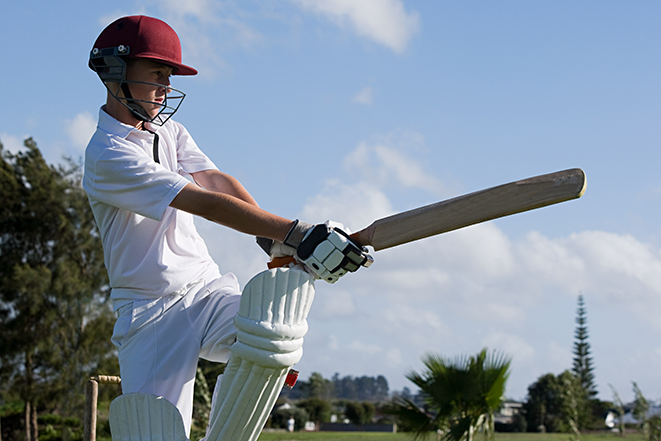 You need more than just a good eye to become a dependable batter. Solid footwork, quick reactions, decision-making, and mental toughness all come into play. Whether you’re defending against a quick bowler or attacking spin on a turning pitch, your technique, mindset and fitness all contribute to how successful you are.
You need more than just a good eye to become a dependable batter. Solid footwork, quick reactions, decision-making, and mental toughness all come into play. Whether you’re defending against a quick bowler or attacking spin on a turning pitch, your technique, mindset and fitness all contribute to how successful you are.
Essential qualities for a batter include:
- Good balance and footwork
- Sharp hand-eye coordination
- Sound shot selection
- Patience and discipline
- Adaptability to different pitch and match conditions
Paying attention to these skills can really help your performance on the pitch and leave your team in a better position to succeed.
Batting Stance
Before playing your first shot, it’s essential to master a solid batting stance and grip. A strong, balanced setup at the crease lays the foundation for good shot selection, timing, and footwork. You want to ensure you’re comfortable and ready for whatever happens. Make sure that you can:
- Move quickly
- Hit shots in any direction
- Give your shots power
- Play against spin bowling
- Transfer weight to either foot
Keeping track of these will allow you to make the most of your time at the crease.
The Basics
To get your batting technique right, start with the basics:
- Body Position: Stand sideways to the bowler, with your front shoulder and head facing them. This helps you see the ball clearly and judge its line and length.
- Feet Position: Keep your feet about a shoulder-width apart to provide more balance. You can adjust for different pitch conditions—wider for low bounce, more upright for bouncier surfaces.
- Knee Bend: Slightly bend your knees. It gives you more flexibility and helps you move quickly when reacting to the ball.
- Weight Distribution: Stay on the balls of your feet with your weight evenly balanced, so you can move in any direction quickly.
- Head Position: Keep your head still and eyes focused on the bowler’s hand. This helps you spot variations in the delivery and stay balanced.
- Grip: Place your top (non-dominant) hand near the top of the bat and your bottom (dominant) hand near the bottom. Your top hand controls direction; the bottom adds power. Hold the bat firmly but not too tightly.
- Backlift: As the bowler runs in, lift your bat back over your rear foot, but don’t lift it too high or you might struggle to bring it down in time.
Getting these basics right gives you balance, control, and confidence at the crease. But it’s also important to stay flexible. You may need to adjust your stance depending on the type of bowler you’re facing or the pitch conditions. Practising against a range of bowlers in different scenarios will help you stay prepared and adapt during matches.
Decision Making
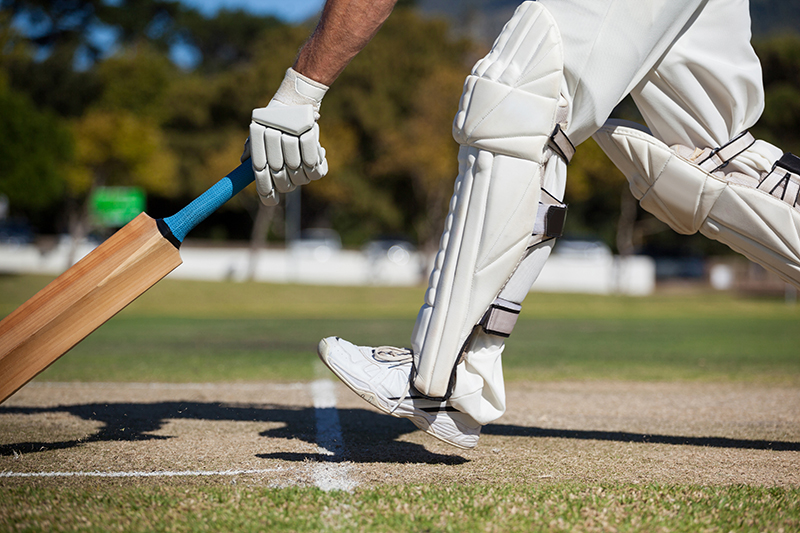 Being a successful batter will require a lot of good decision-making. You need to learn how to correctly judge the length and line of each delivery because it might affect your stance or the stroke you decide to play. You need to know how to play strokes and when to play them. Focus on different scenarios in training and you’ll be ready for different match situations.
Being a successful batter will require a lot of good decision-making. You need to learn how to correctly judge the length and line of each delivery because it might affect your stance or the stroke you decide to play. You need to know how to play strokes and when to play them. Focus on different scenarios in training and you’ll be ready for different match situations.
Your decision-making doesn’t just stop with the ball. Once you’ve taken your shot, you’ll need to decide how many wickets to run. Choosing whether to run, hold your ground, or turn back can make all the difference in building an innings or avoiding a run-out. Good communication, quick reactions, and sharp awareness are all essential.
Running Between the Wickets
Here are some basics to keep in mind:
- Watch the Ball – Always keep your eyes on the ball, especially when it’s played into the infield. A slight fumble or misfield might be your chance to sneak a quick single.
- Call Loud and Clear – Use clear calls like “yes,” “no,” or “wait” — and make sure they’re loud enough for your partner to hear. The first call usually comes from the striker, but both batters must stay alert and ready to respond.
- Know the Fielders – Part of good decision-making is knowing where the fielders are and how fast they move. If the ball goes to a strong arm, think twice before risking a second run.
- Turn Quickly – If there’s a chance for two or three runs, your turn at the crease matters. Keep your bat low and turn sharply to avoid losing momentum.
- Avoid Ball-Watching Mid-Run – Once you’ve committed to the run, trust your partner and focus on running hard. Looking back can slow you down and lead to confusion.
The Importance of Fitness for Batting
Batting for long innings requires stamina, strength and concentration. Good fitness helps you run between the wickets quickly and improves your ability to hold your shape at the crease. Core strength, flexibility and agility all play a role in executing quality shots.
Training tips:
- Include cardio (e.g., shuttle sprints) and strength training (e.g., squats, lunges) in your weekly routine.
- Improve your core with planks and rotation drills to help with balance and control.
- Don’t neglect flexibility—tight hips and hamstrings can affect your movement and shot execution.
Cricket Batting Drills
To stay at the top of your game, you need to continue developing your skills. There are plenty of batting drills you can incorporate into your training, but we’ve included a few to get you started. Grab some cones, markers or more training equipment to organise your players.
Cricket Hockey
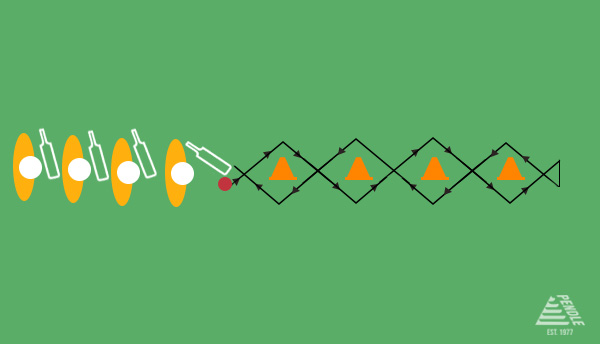
Equipment Needed: 1 bat and gloves per player, 1 ball, 2 stumps, cones
Set-Up:
- Place two stumps 20 metres apart.
- Set out cones in a straight line between the stumps at regular intervals.
- Players line up behind the starting stump with their bats and gloves on.
Instructions:
- Player 1 uses their bat to dribble the ball in and out of the cones to the far stumps.
- Once they reach the end, they turn and dribble back through the cones.
- When Player 1 finishes, Player 2 takes the ball and repeats the process.
- Continue until all players have completed the circuit.
Make It Harder:
- Turn it into a relay race with two teams.
- Add more cones to increase difficulty and control.
- Introduce timed rounds for speed and intensity.
Why It Helps:
- Improves bat control and grip awareness, especially in young/new players.
- Encourages correct hand position and foot coordination.
- A fun, dynamic way to build general fitness and agility.
Front Foot Drive Drill
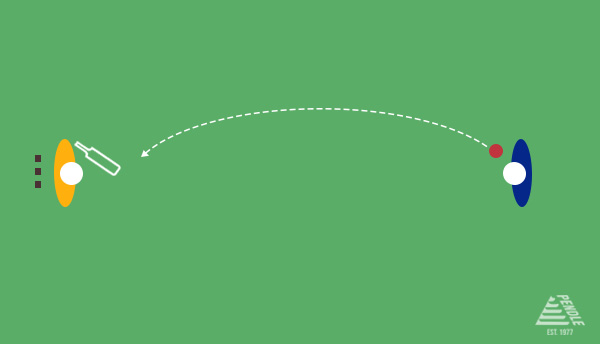
Equipment Needed: Bat, ball, set of stumps, and a partner.
Set-Up:
- Mark a crease or use a practice net.
- You stand with a bat as a partner feeds balls to you.
Instructions:
- A feeder delivers the ball underarm on a good length.
- Focus on stepping forward into the shot.
- Keep your head over the ball and play a controlled front-foot drive.
- Repeat 15-20 times, focusing on smooth foot movement and balance.
Make It Harder:
- Introduce a moving ball.
- Add fielders to create pressure and simulate real scenarios.
- Set targets for timing or placement
Why It Helps:
- Builds confidence in attacking good-length deliveries.
- Reinforces proper front-foot technique and timing.
Shot Selection Drill
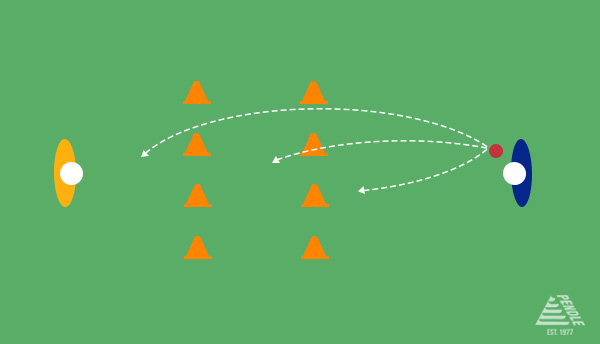
Equipment Needed: Bat, soft balls, cones, partner
Set-Up:
- Use cones to mark three lines on the pitch. These 3 zones created by these lines represent different ball lengths – full, good, and short.
- The space closest to you is full, the middle is good, and the furthest is short.
Instructions:
- Coach or partner underarms or throws balls to land randomly in different zones.
- As the ball is released, call out the length before it pitches.
- Get a point for correctly identifying the length and lose a point for guessing incorrectly. If you don’t make a call, you lose two points.
- Keep going for a specified amount of time or until you reach a specific number of points.
Make It Harder:
- Reduce the distance between the thrower and the batter to increase reaction time.
- Add variation in line and introduce swing/spin using different balls.
- Randomise the pace or deliver the ball with a less predictable rhythm.
Why It Helps:
- Sharpens decision-making and shot selection under pressure.
- Trains you to judge line and length early.
- Builds confidence and adaptability for real match scenarios.
Wickets Relay
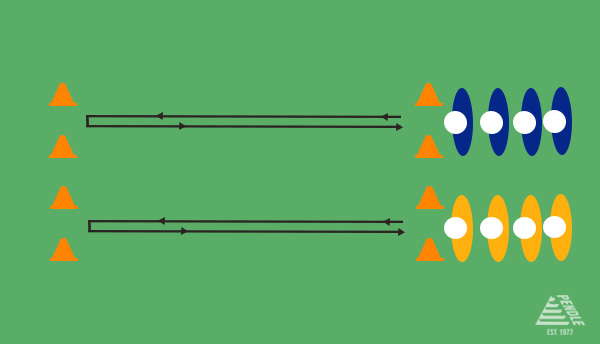
Equipment Needed: Cones,
Set-Up:
- Divide players into two teams
- Set up two lines of cones to represent the length of the pitch
Instructions:
- The players must run to the other side and back.
- Once the first player is back, the second sets off until all players have run between the cones.
- The first team to complete the run wins.
Make It Harder:
- Have all players carry their bats as they run.
Why It Helps:
- Boosts fitness.
Run or Wait Drill
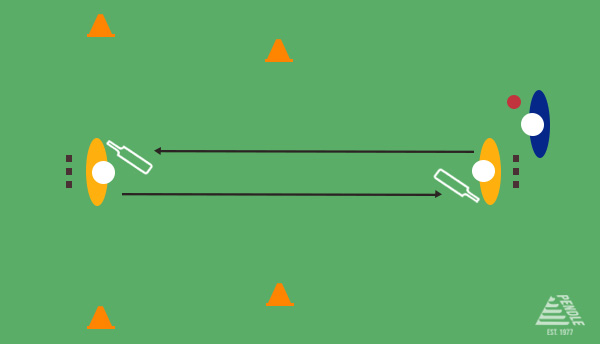
Equipment Needed: Batting gear, cones, 1 ball, stumps, and a coach or feeder
Set-Up:
- Mark a cricket pitch length with stumps at each end.
- Place cones at common fielding positions (e.g., point, cover, mid-off).
- A coach or feeder stands with balls ready to roll or throw into different areas.
- Two batters start at opposite ends of the pitch.
Instructions:
- The coach feeds or rolls the ball randomly into the infield.
- The striker must decide quickly whether to run, wait, or stay.
- Both players must communicate clearly using calls (“Yes”, “No”, “Wait”) and commit.
- Vary the speed, direction, and distance of the ball to simulate real match situations.
- Rotate roles so each player gets a turn at striker and non-striker.
Make It Harder:
- Add live fielders to increase pressure and unpredictability.
- Use a stopwatch to time how quickly decisions are made.
- Penalise hesitation or miscommunication to reinforce sharp decision-making.
- Introduce throwdowns to simulate real-time pressure with possible run-outs.
Why It Helps:
- Sharpens quick decision-making under pressure.
- Reinforces the importance of communication and trust between batters.
- Simulates real match scenarios with varied outcomes.
- Improves fitness, awareness, and match preparedness.
Train Hard, Bat Smarter!
The best batters train consistently and deliberately. These batting drills will help you sharpen your technique, improve decision-making and build the physical endurance you need to score big. Whether you’re a top-order anchor or a lower-order finisher, your success starts with smart training.
Want to look and feel your best at the crease? Explore our latest cricket whites, training tops, shorts, bucket hats, cricket caps and more.
Tags: Cricket, cricket coaching, cricket drills, cricket training, cricket training drills

